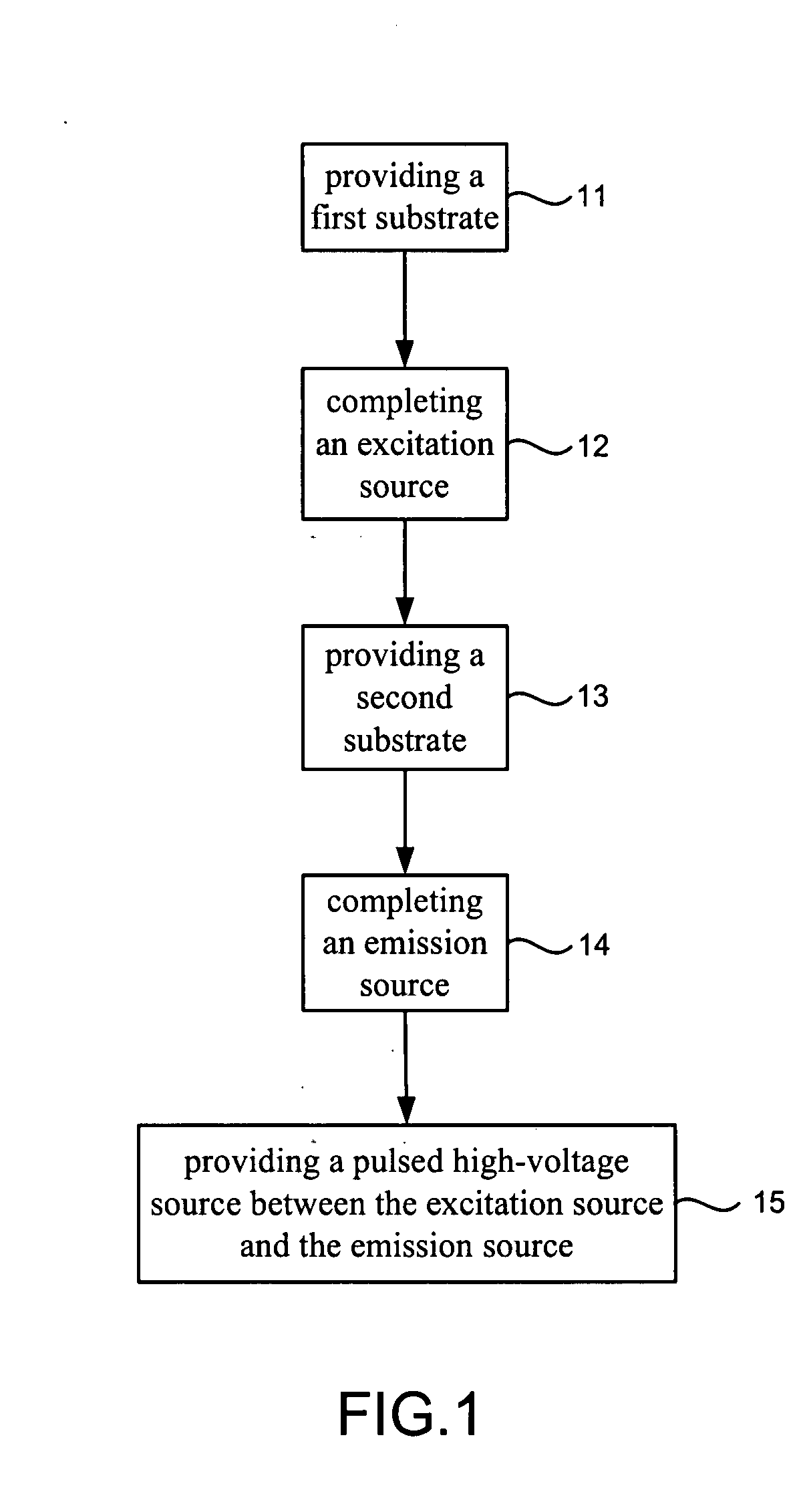Pulsed high-voltage silicon quantum dot fluorescent lamp
a high-voltage silicon quantum dot and fluorescent lamp technology, which is applied in the manufacture of electrode systems, cold cathode manufacturing, electric discharge tube/lamp manufacture, etc., can solve the problems of mercury-based fluorescent lamps being dangerous to the environment, affecting throughput, and complex structur
- Summary
- Abstract
- Description
- Claims
- Application Information
AI Technical Summary
Benefits of technology
Problems solved by technology
Method used
Image
Examples
Embodiment Construction
[0023]Referring to FIGS. 1 through 6, there is shown a method for making a pulsed high-voltage silicon quantum dot fluorescent lamp 1.
[0024]Referring to FIGS. 1 and 2, at 11, a first substrate 21 is provided. The first substrate 21 is made of silicon, glass, ceramic or stainless steel.
[0025]Referring to FIGS. 1 and 3, at 12, an excitation source 2 is completed. The substrate 21 is coated with a buffer layer 22. The buffer layer 22 is coated with a catalytic layer 23. The coating is done by an e-gun evaporation system or a sputtering system. The buffer layer 22 is made of titanium. The catalytic layer 23 is made of nickel, aluminum or platinum. Nanometer carbon tubes 24 are provided on the catalytic layer 23 by chemical vapor deposition (“CVD”) in which ethane or methane is used as a carbon source. The nanometer carbon tubes 24 are made of nanometer sizes and with conductivity. The nanometer carbon tubes 24 are used as nanometer discharging elements to discharge when subjected to an ...
PUM
| Property | Measurement | Unit |
|---|---|---|
| sizes | aaaaa | aaaaa |
| voltage | aaaaa | aaaaa |
| thickness | aaaaa | aaaaa |
Abstract
Description
Claims
Application Information
 Login to View More
Login to View More - R&D
- Intellectual Property
- Life Sciences
- Materials
- Tech Scout
- Unparalleled Data Quality
- Higher Quality Content
- 60% Fewer Hallucinations
Browse by: Latest US Patents, China's latest patents, Technical Efficacy Thesaurus, Application Domain, Technology Topic, Popular Technical Reports.
© 2025 PatSnap. All rights reserved.Legal|Privacy policy|Modern Slavery Act Transparency Statement|Sitemap|About US| Contact US: help@patsnap.com



